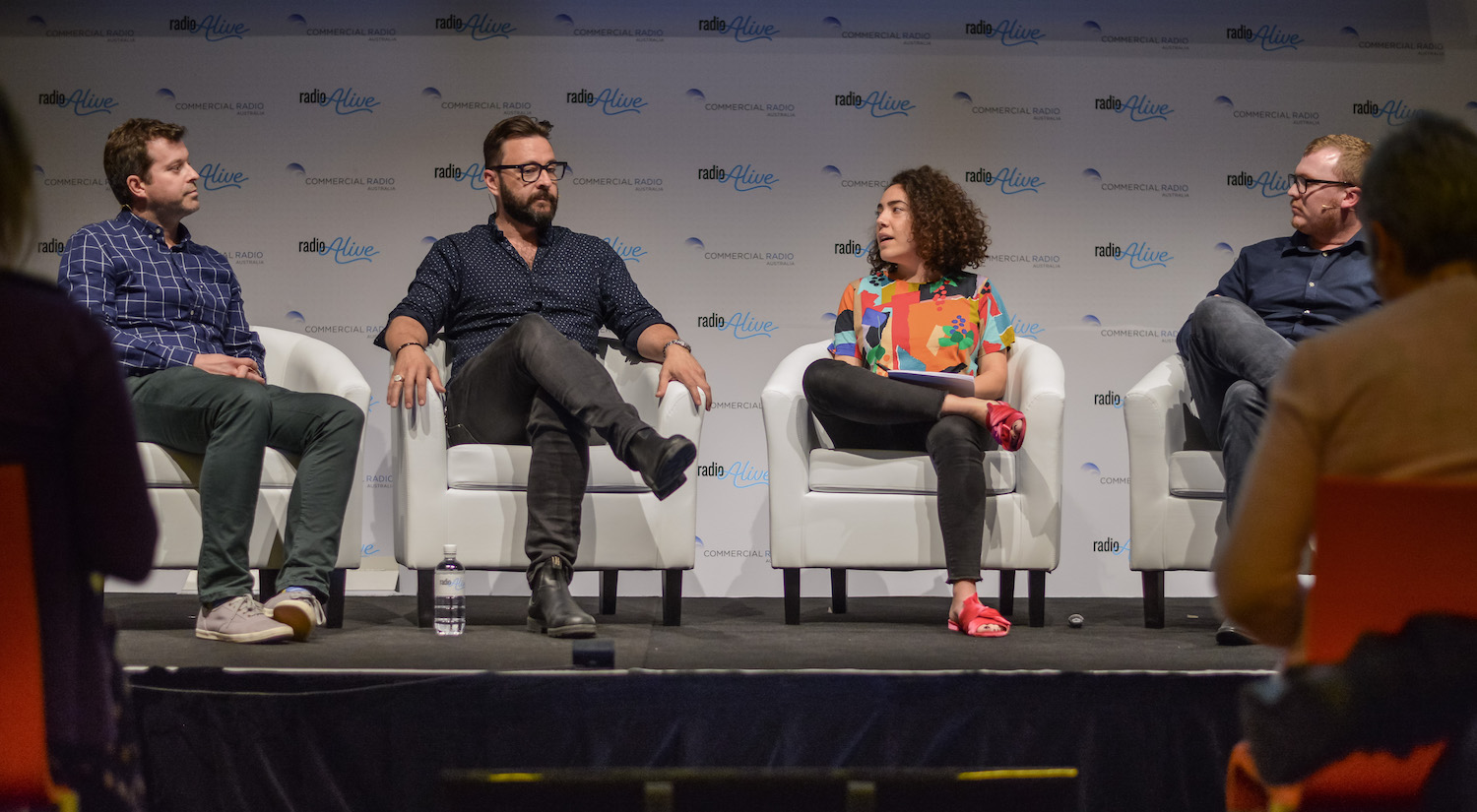Beyond the quotas: What else can radio do to further the cause of Aussie acts?

A panel on Australian commercial radio music quotas wrapped up Melbourne’s Radio Alive 2018 conference Friday, revealing the progress that’s been made this year furthering the cause of local artists.
Music quotas on commercial radio are a hot topic that hasn’t strayed far from the spotlight for the better part of the last year.
In November of 2017, an investigation by The Music Network revealed APCOM – the body that oversaw Australian music quotas on commercial radio – no longer existed.
Then, following a discussion at Brisbane’s BIGSOUND Conference, it was found that the definition of an Australian performance had not been uniformly applied across the music and radio industries for a number of years when it came to the music used to fill radio quotas.
In light of this, Commercial Radio Australia teamed up with APRA AMCOS and ARIA to conduct a review into music quotas.
At Radio Alive 2018 CRA chief Joan Warner revealed that the result has been a much higher level of compliance from radio stations across the country.
But adhering to music quotas is only part of the story behind the rise in Aussie acts being played at radio, and following the announcement of the results, Hit Network’s Ash London mediated a panel to find out more about the state of Australian music at commercial.
The panel also featured K rock content director James Speed, Triple M head of content Mike ‘Fitzy’ Fitzpatrick and Nova Network head of music Scott Baker-Smith.
Here’s what we learnt:
The state of pop music in Australia
All three panellists agreed that the state of Australian pop music is stronger than it has been in years, despite some stations around the country moving away from a CHR music strategy.
“Pop music is in a really good place right now,” said London.
“Artists like Amy Shark, Dean [Lewis], are no-brainers,” agreed Speed, which means there’s “no problem reaching our quotas”.
Baker-Smith concurred, saying the last “12-18 month period has been a bonanza of Aussie pop music.
Fitzpatrick says that while Triple M is restricted in terms of its music format, artists like Morgan Evans, Shark and Lewis are fantastic at crossing genre barriers and as a result “they are the songs we can break the format for.
“Every Australian man can relate to ‘Be Alright’ [by Dean Lewis] and say ‘fuck that was me!’”.
And the success of these acts both here and overseas is driving radio to look for the next big thing.
“The success of these acts… makes us more open to taking risks,” said Speed.
What more can stations do?
Supporting Aussie music goes beyond just playlisting local acts.
Scott Baker-Smith pointed to Nova’s Red Room concept as a key way in which Nova supports Aussie acts beyond radio.
“There’s been an Aussie act doing the Red Room every month this year,” he revealed.
Fitzpatrick said that Triple M’s Garage Sessions function in a similar way and that the network also gets behind acts by supporting tours and on social media.
The Triple M boss also said that sports-heavy stations shouldn’t be able to hide behind their format, because there are other opportunities during sports events including live performances and playing music throughout games.
There are plenty of “opportunities in and around talk”, he said.
It’s important, however, to remain realistic, because stations are still limited by the tastes of their listeners, and their need to rate in order to draw advertisers and remain profitable.
Fitzpatrick went on to say that as much as Triple M would like to be playing even more Aussie music, that those sorts of decisions “all come down to the commercial reality.”
That “commercial reality” is what’s forced a number of stations to change their music formats this year.
2DayFM in Sydney changed from a CHR format to an Adult Contemporary format, calling it ‘More Music, More Variety’, while Nova implemented it’s ‘Greatest Hits Workday’ nation-wide.
“We couldn’t get new music to test,” revealed Baker-Smith. “There was a change and an evolution of what was happening… we had to sacrifice [some] new music.”
The role of record labels
Though the panel generally agreed that there’s still more that radio can do, there was also a sentiment that record labels should be pushing more Australian acts to the airwaves.
Baker-Smith said that part of the problem is that a lot of the artists pushed by labels to Nova are “left of centre” and are therefore unlikely to test well enough to pick up mainstream play.
“We need more choice,” he said.
Fitzy agreed; “We see 15 songs a week [from labels], 2-3 of them are Aussie.”
He explained that Triple M isn’t afraid to work closely with a label if they want to feature a band, to find a single that works for their format, using the example of ‘Psycho’ featuring Blink-182’s Mark Hoppus from Amy Shark’s latest album LOVE MONSTER.
“When we want to champion a band, we speak with the reps and work with them.”
Despite this, Fitzpatrick believes that there is still a lot more “cross-pollination” that needs to take place between the music and radio industries.
Baker-Smith surmised that there is still a “wide gulf” between the two, although their general goals remain the success of Australian artists.



I was fortunate enough to catch the panel discussion immediately before this one. A great point that was raised – when an international artist tours Australia it’s actually mandated that they have a local support. As radio stations it would be fantastic if we could spend more time profiling those artists. Even if it’s just a quick interview, plug on their Facebook page or “god forbid” a spin of their track.
Patting each other on the back for supporting Amy Shark, Dean Lewis and Morgan Evans… such pioneers.
God help the future of Aus music on radio